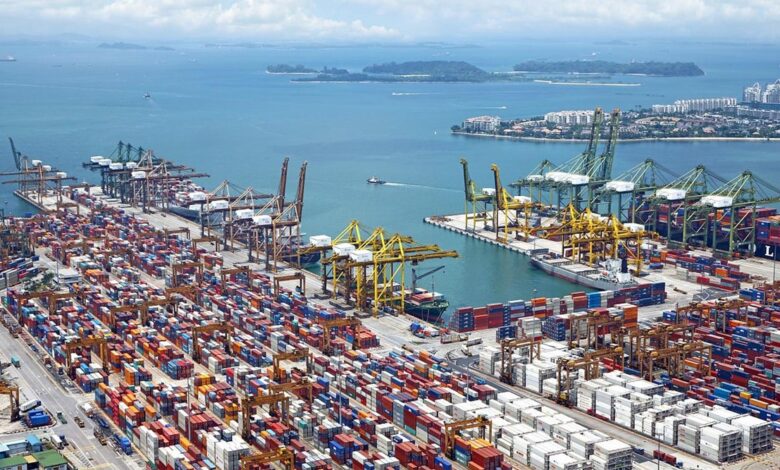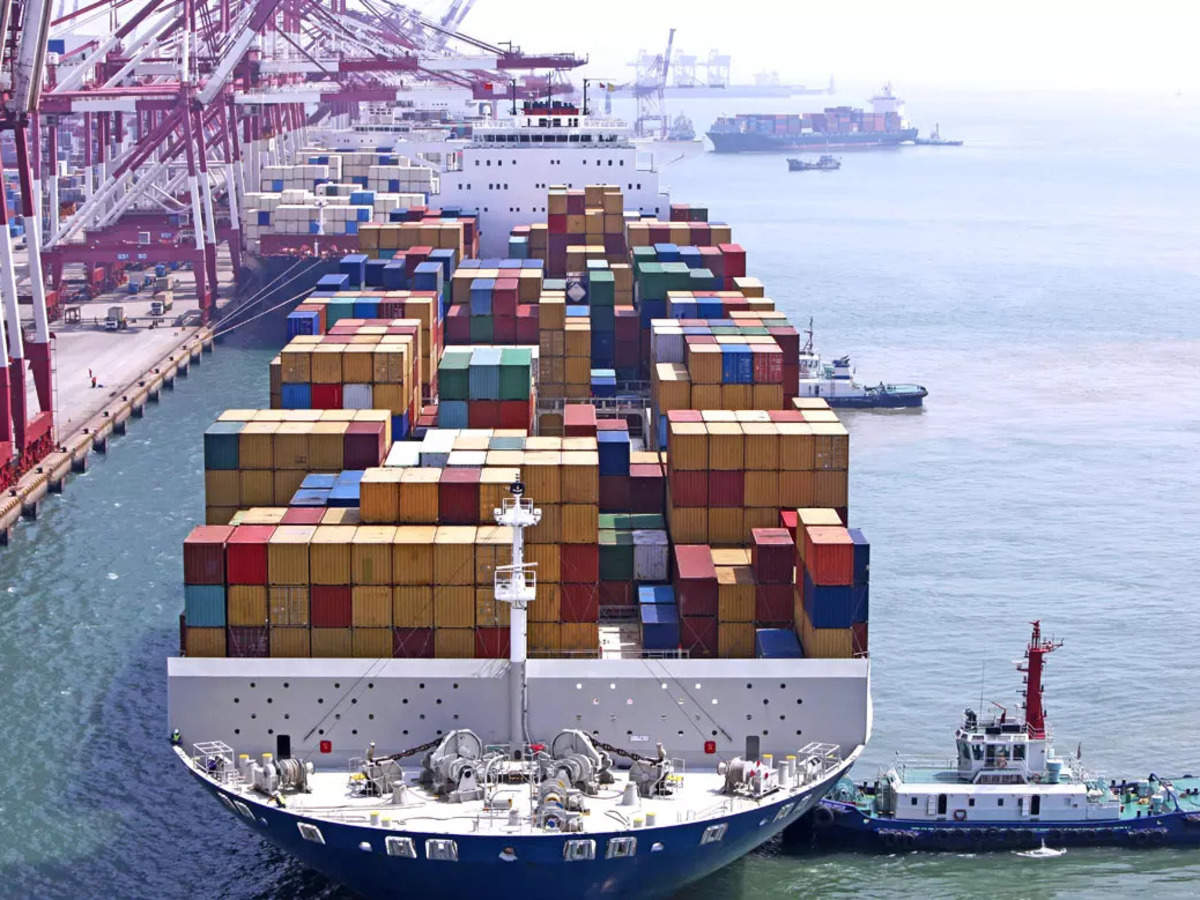India’s industrial exports are expected to surpass $1 trillion by FY28.

According to the report “The Trillion-Dollar Manufacturing Exports Opportunity for India,” India’s manufacturing exports are predicted to increase to $1 trillion by the fiscal year 2027–2028 due to favorable manufacturing trends and development in priority industries. Chemicals, auto parts, electronics, pharmaceuticals, textiles, and industrial machinery will be the six industries boosting export growth.
Indian companies must concentrate on having a clear export strategy, the necessary execution skills, the appropriate partnerships to facilitate exports, and an ideal capital expenditure (CAPEX) efficiency focus to expand manufacturing capacity to take advantage of this opportunity.
The automotive industry will see electric vehicles and components contribute up to $5 billion to this export increase as a result of rising interest in electric vehicles.
According to the research, six mega trends that have advanced quickly over the past two years have fueled India’s export development. These include increased merger and acquisition (M&A) activity; increased private equity/venture capital (PE/VC)-led investment in manufacturing; advantages for India in certain manufacturing sectors; government initiatives to support manufacturing throughout the nation; capital expenditure infusion into manufacturing sectors; and supply chain diversification.
The trillion-dollar opportunity
Despite being the sixth-largest economy in the world and making up 3.1% of the global GDP, India only contributes 1.6% of the world’s exports. China, however, makes up 15% of global commerce, compared to the US’s 8.3%, Germany’s 7.9%, Japan’s 3.7%, and the UK’s 2.3%.
However, India’s manufacturing exports for FY21–22 hit a record-breaking $418 billion, an increase of more than 40% over the previous year’s $290 billion and the pre-pandemic high of $328 billion in FY18–19. The strong growth in exports last year, especially in the final few months, was due to the considerable increase in the percentage of manufacturing in the nation’s exports, although pre-pandemic manufacturing exports had typically expanded between 5% and 10%.
For instance, manufacturing-led exports were $34.5 billion, $34.5 billion, and $40.4 billion in the first three months of the previous fiscal year. This represents an increase of more than 20% from the first quarter of FY20–21, driven by sector-specific gains (the top 15 export categories accounted for more than 72% of total exports), which have been made possible by a global focus on supply chain resilience as well as specific policy initiatives to promote exports.
Supply chain diversification
The report said that the expansion of India’s exports was positively impacted by the post-pandemic diversification of the world supply chain. While large Asian economies like Japan began considering India as a substitute for China for sourcing their needs, American businesses ranked India among the top four locations for business relocation. In 2021, China’s CO2 emissions increased by 6% (almost 500 metric tonnes), whereas India’s emissions increased by 1.4% (30 metric tonnes), assisting businesses in moving to India to meet their environmental, safety, and health criteria.
When compared to other manufacturing centers, India has a cost advantage, a robust supplier network, and advantages in research and development (R&D). Indian enterprises continuously capitalize on these advantages. India’s production costs are around 30% to 35% less than those in the US and Europe for pharmaceutical products.
Due to India’s cost advantage over the US and Europe and its superior manufacturing skills, numerous multinational corporations are considering setting up export-focused operations there. Indian automakers shipped 1,27,115 automobiles between April and June of FY22, more than double the 43,619 units exported during the same period in FY21.
Due to India’s excellent manufacturing and research and development skills, expanding supplier base, and strong regulatory backing, companies like Samsung, Wistron, and Foxconn are moving their electronics production there. India is growing as an exporter of industrial machinery as a result of its low production costs and high technological skills. Due to the availability of inexpensive raw materials and cheaper salaries, India has a cost edge in the textile industry.
Government programs
According to the paper, government-initiated incentive programs tied to production would aid in luring sizable investments throughout the manufacturing sector, propelling both domestic growth and industry-driven exports. The areas of electronics, pharmaceuticals, automotive, advanced chemistry cell (ACC) batteries, solar, and white goods (home appliances) will see the highest growth driven by the PLI schemes.
The foreign direct investment (FDI) policy initiatives aimed at lowering the FDI restrictive index have augmented the capital inflow, as evidenced by the fact that FDI investments increased by about 65% between 2015 and 2020. The PLI outlay of $47.2 billion, planned over five years starting in 2021, has increased domestic production and helped manufacturing-led exports.
The report stated that important free-trade agreements (FTAs), such as the Comprehensive Partnership Agreement (CEPA) between India and the United Arab Emirates and the Economic Cooperation and Trade Agreement (IndAus ECTA) between India and Australia, have been signed to increase bilateral trade and foster the expansion of exports, “the report stated. ”There is a critical need for CAPEX augmentation as many businesses attain high levels of capacity utilization. A solid predictor of rising manufacturing activity across sectors is a growth in planned CAPEX that is more than six times higher than the planned CAPEX from five years ago.
Manufacturing businesses are reshaping their portfolios through mergers and acquisitions to increase growth, add new capabilities, and access new markets and market segments. About 80% of the $108 billion in M&A agreements in India in 2021, which included 15.7% of the industrial sector, were completed by first-time purchasers.
Since 2019, PE/VC investments in Indian companies have increased by 55%, reaching a high of approximately $70 billion in 2021. Particularly in the chemical, pharmaceutical, automotive, and electronics industries, PE/VC-led investments have been seen, which has contributed to an increase in manufacturing-driven exports.
In the meantime, values across many manufacturing sub-sectors are rising as a result of the sector’s expansion. The manufacturing industry received at least 18% of all PE/VC investments in 2021, the majority of which went to the chemicals and pharmaceuticals sub sectors.
The manufacturing sector in India continues to have solid foundations, despite potential recessionary and inflationary pressure. This decade will see the continuation of the mega-trends, which will hasten India’s exports driven by manufacturing.
Who is driving exports of manufactured goods?
India is positioned for exponential expansion in the manufacturing-led export sector, particularly in the chemicals sector. Chemical exports are anticipated to increase at a CAGR of 19%–23% ($110–130 billion by FY28), mostly as a result of falling manufacturing costs and growing expenditures. Exports of specialty chemicals and agrochemicals are anticipated to expand at a significant rate.
One of the most appealing industries for manufacturing-led exports is the electronics industry, which is predicted to increase at a CAGR of 35%–40% to $120–145 billion by FY28. The semiconductor sector benefits from India’s excellent manufacturing technologies and R&D skills, which are geared toward chip design and supply chain optimization from beginning to finish. As a result, India could start to dominate the mobile phone export market.
India’s exports of textiles and apparel are anticipated to increase at a CAGR of 13%-16% to $95 billion to $110 billion by FY28, driven in part by the existence of an end-to-end value chain, competitive production costs, and preferential market access. Technical textiles and man-made fibers are projected to provide enormous development potential in international trade within the sector.
By FY28, India’s automotive exports, which include electric vehicles (EVs), are predicted to increase at a CAGR of 15%–18% ($45 billion–$55 billion), mostly as a result of low-cost manufacturing and a sizable Tier 2 and Tier 3 supplier base that guarantees the supply of automotive components. By FY28, India’s exports of industrial machinery are projected to expand at a CAGR of 18%–20% ($70–75 billion) and exports of medications and pharmaceuticals at a CAGR of 16%–18% ($45–50 billion).
edited and proofread by nikita sharma




